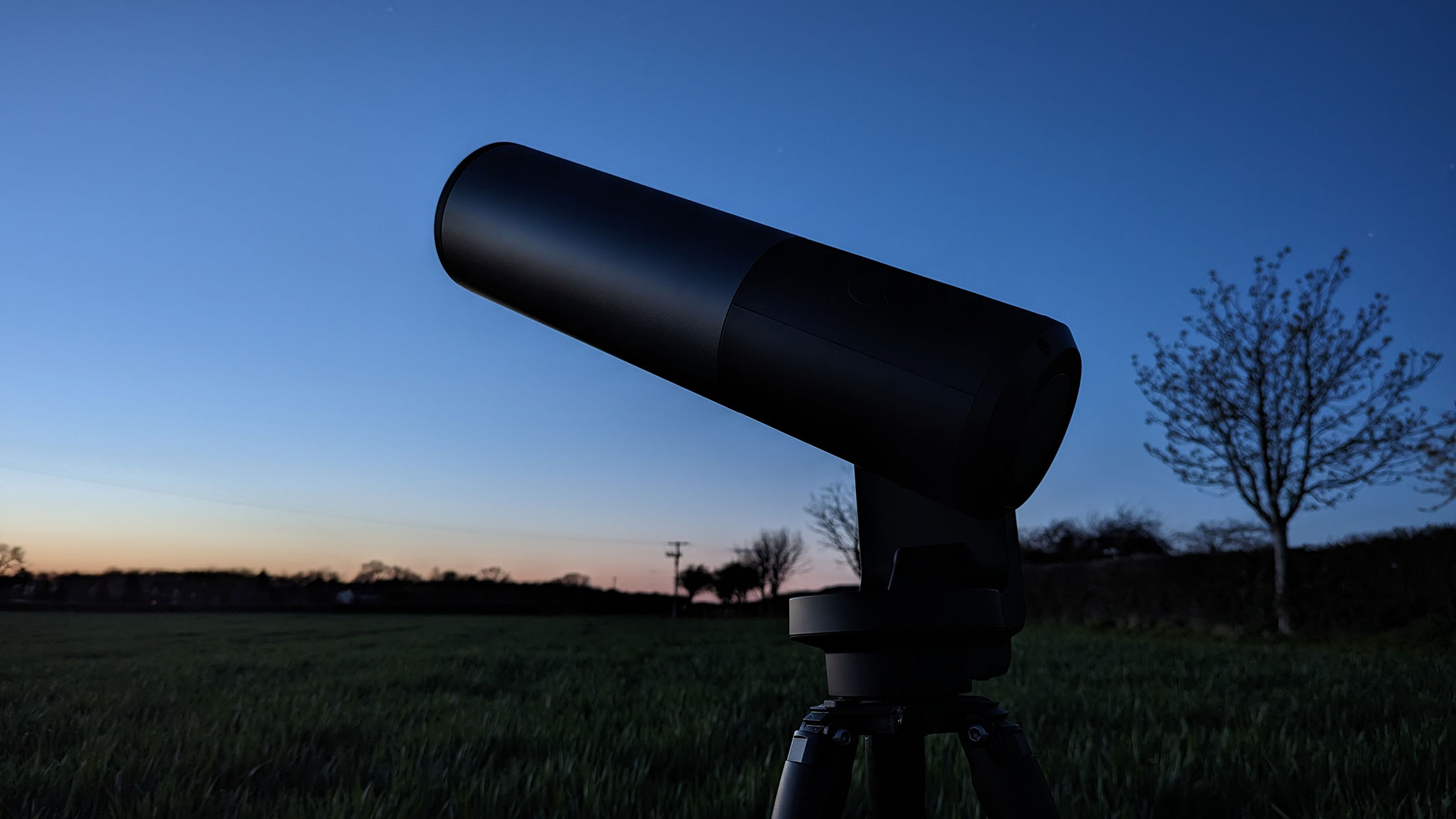
Many photographers love to image the night sky and taking long exposures on a wide-angle lens is an affordable way to do so. However, deep sky photography is a real treat but it’s relatively complex when dealing with star trackers and camera adapters. That’s where the Unistellar eQuinox 2 comes in. The second in the eQuinox series this smart telescope navigates to and zooms into the most distant galaxies and nebulae for impressive views. Not only that, but the telescope also photographs the views for you. In its database, there are over 5000 celestial objects and over 37 million stars which it can automatically slew to.
A simple set-up that will be familiar to any photographer with a tripod, it’s quick to get started and there’s almost no prerequisite knowledge of the night sky needed (except to use the telescope when it’s dark and cloudless). An improved 6.2MP image sensor gives decent images of the stars and if you pack it away in the proprietary backpack it’s handily convenient to travel to locations with.
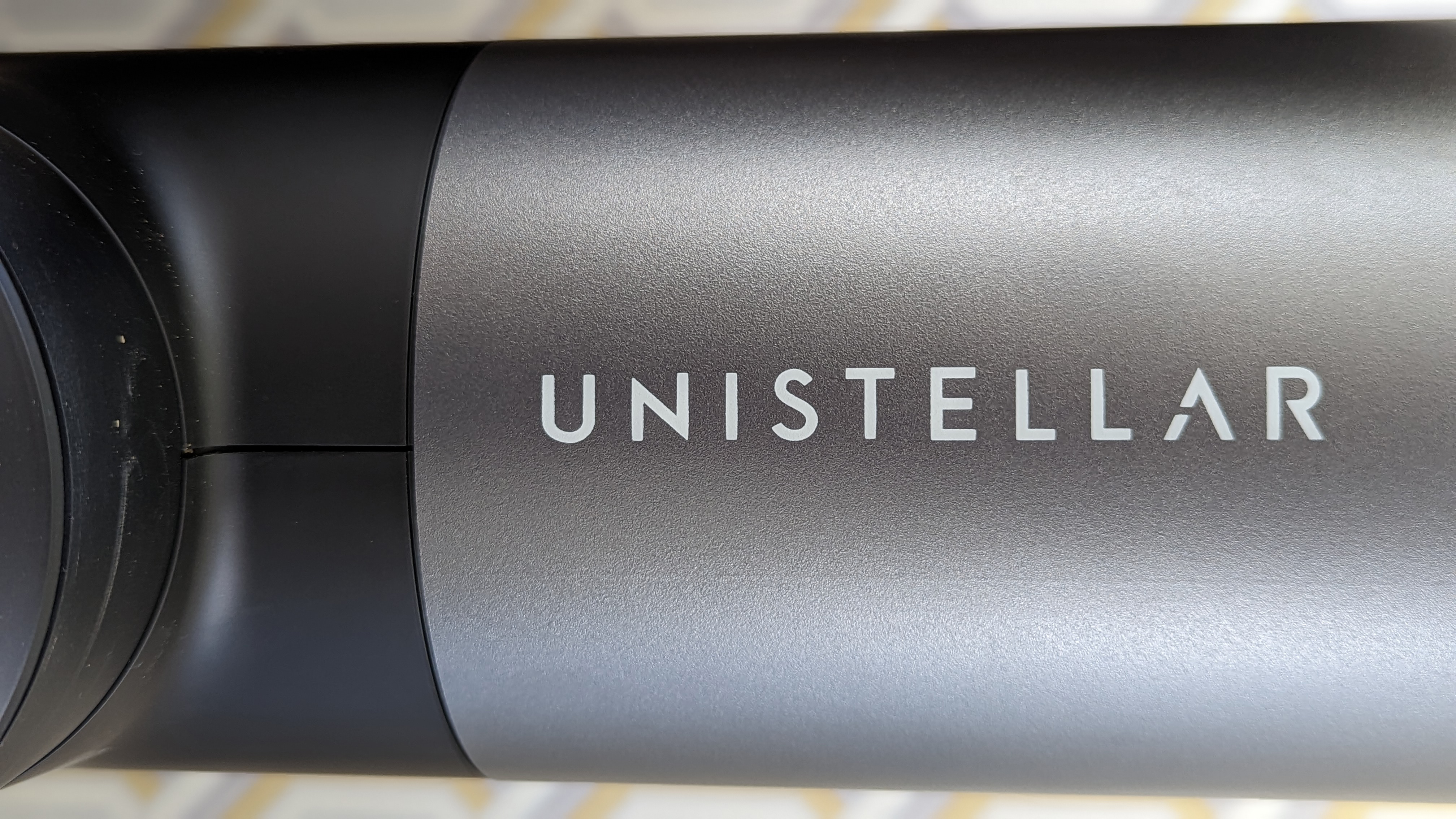
Specifications
Image resolution: 6.2 MP
Focal length: 450 mm
Storage: 64 GB
Field of view: 34 x 47 arc minutes
Mount: Motorized Alt-azimuth
Limiting magnitude: 18.2
Battery: 11 hrs
Mirror diameter: 114 mm
Weight: 9 kg
Key Features
Everything about the eQuinox 2 is designed to be simple. The telescope has a single power button that flashes purple and is a constant red when attempting to connect and connected to a smart device respectively. The telescope tube is mounted on a single fork arm which is also motorized and slots into the tripod with ease, secured with two screws.
The tripod is height adjustable with three leg sections and two locking levels and the legs can be widened by sliding out the adjustment tab at the top of the tripod legs for a total of two positions. The lens cap also doubles as a Bahtinov mask for which to focus the telescope which is useful when attempting deep sky imaging which is notoriously difficult to get pin-sharp due to the lack of light from small, dim stars.
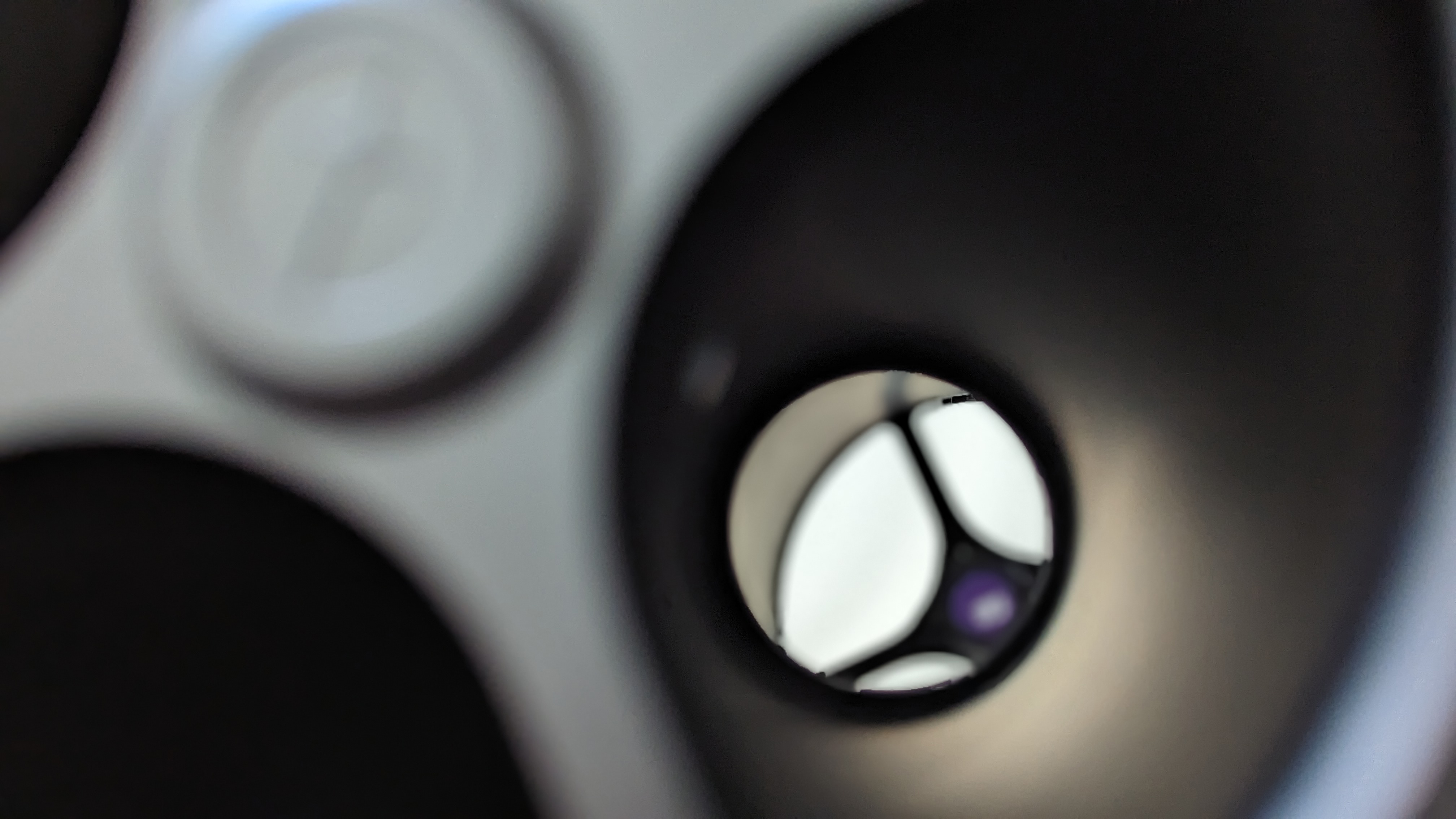
The real magic happens in the interface between the telescope and the smart device. Install and open the Unistellar app on Android or iOS devices and you’ll be met with a user-friendly interface that has three main sub-menus: Catalog, Scientific Observations, and the Gallery. The Catalog outlines every possible night sky object on its database, which can be searched using the search function or filtered through by type and whether it is currently visible in your location and time. A big part of Unistellar’s push is in its astronomy community, under the Scientific Observations tab you can sign-up and take part in citizen science projects and help with asteroid occultations, exoplanet transits, planetary defense tracking, or cometary activity.
The telescope can be manually controlled by pressing the purple telescope icon and selecting ‘move’ which is helpful to look at specific objects in the sky when the telescope isn’t oriented (sadly it only orientates correctly when it’s properly dark) and has a slow mode for accurate slewing. When oriented though, use the Catalog to ‘go to’ specific night sky objects without having to know anything about where they are in the night sky.

Build & Handling
It’s hard to tell the eQuinox 2 apart from the original and it’s also very similar in style to the eVscope 2, its more sophisticated sibling. But no matter how similar it looks to the other Unistellar smart telescopes it’s absolutely beautiful. A long, slender 450mm reflector it’s flanked in black plastic and a meteor grey metal finish.
Although quite long at 68cm base to lens cap and it weighs 9kg it’s easily portable with the additional backpack, we’d recommend this if you’re wanting to take it further than the garden as it confidently protects the delicate instrument and tripod. Though we’d avoid walking long distances because the backpack is long and with all the kit loaded up it’s quite wearing on the shoulders.
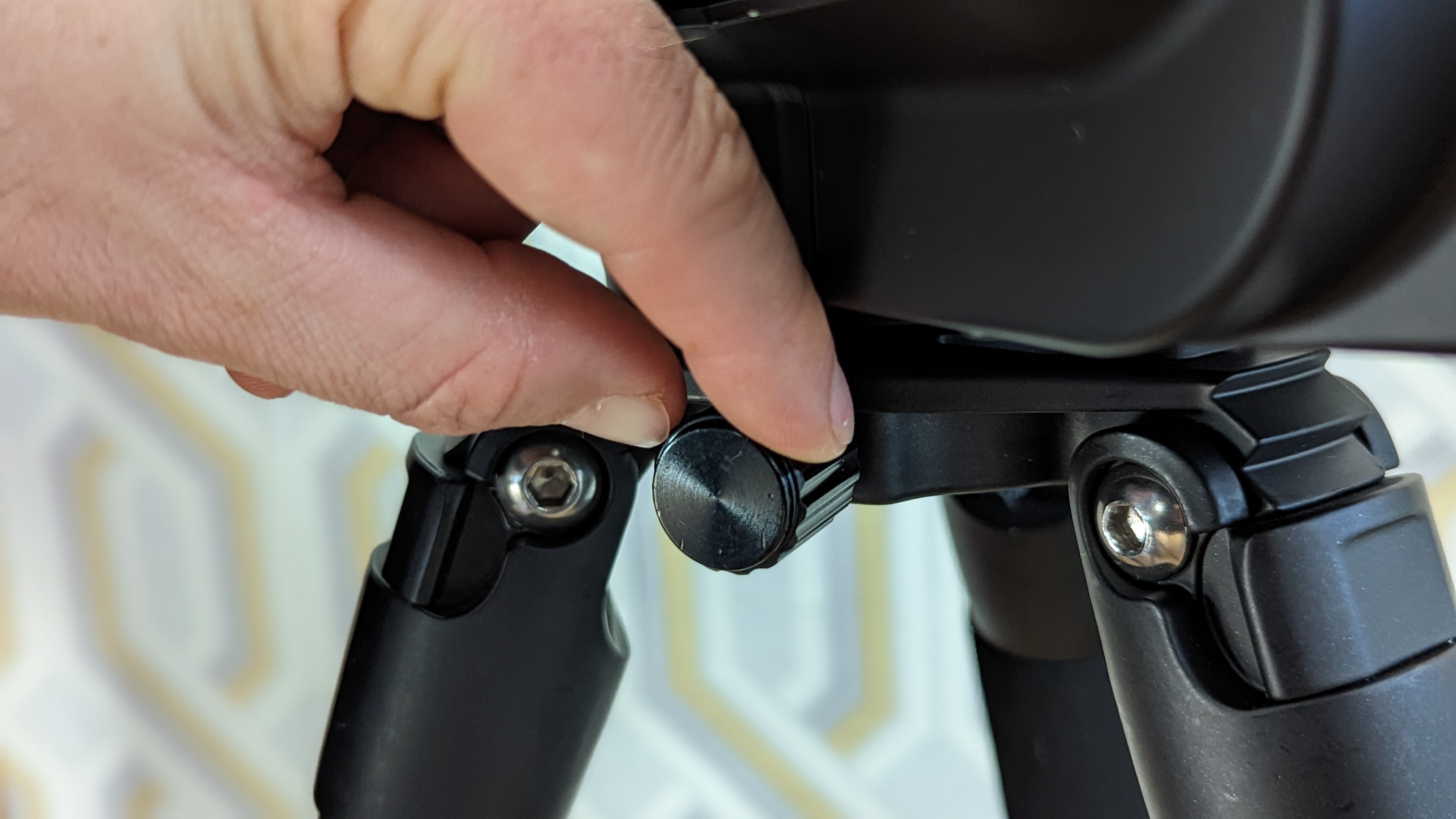
The tripod is absolutely rock solid and thanks to several aforementioned height and leg adjustments it’s flexible enough to be used pretty much anywhere. We didn’t feel that at any point the telescope was at risk of toppling over.
The Unistellar app is brilliantly designed and connects to the telescope without issue, provided it’s dark enough for the telescope to self-orientate. Slewing is quick and simple as the app displays a virtual joystick to change positions. Overall, both the telescope and the app feel solid, robust and are nice to look at and use.
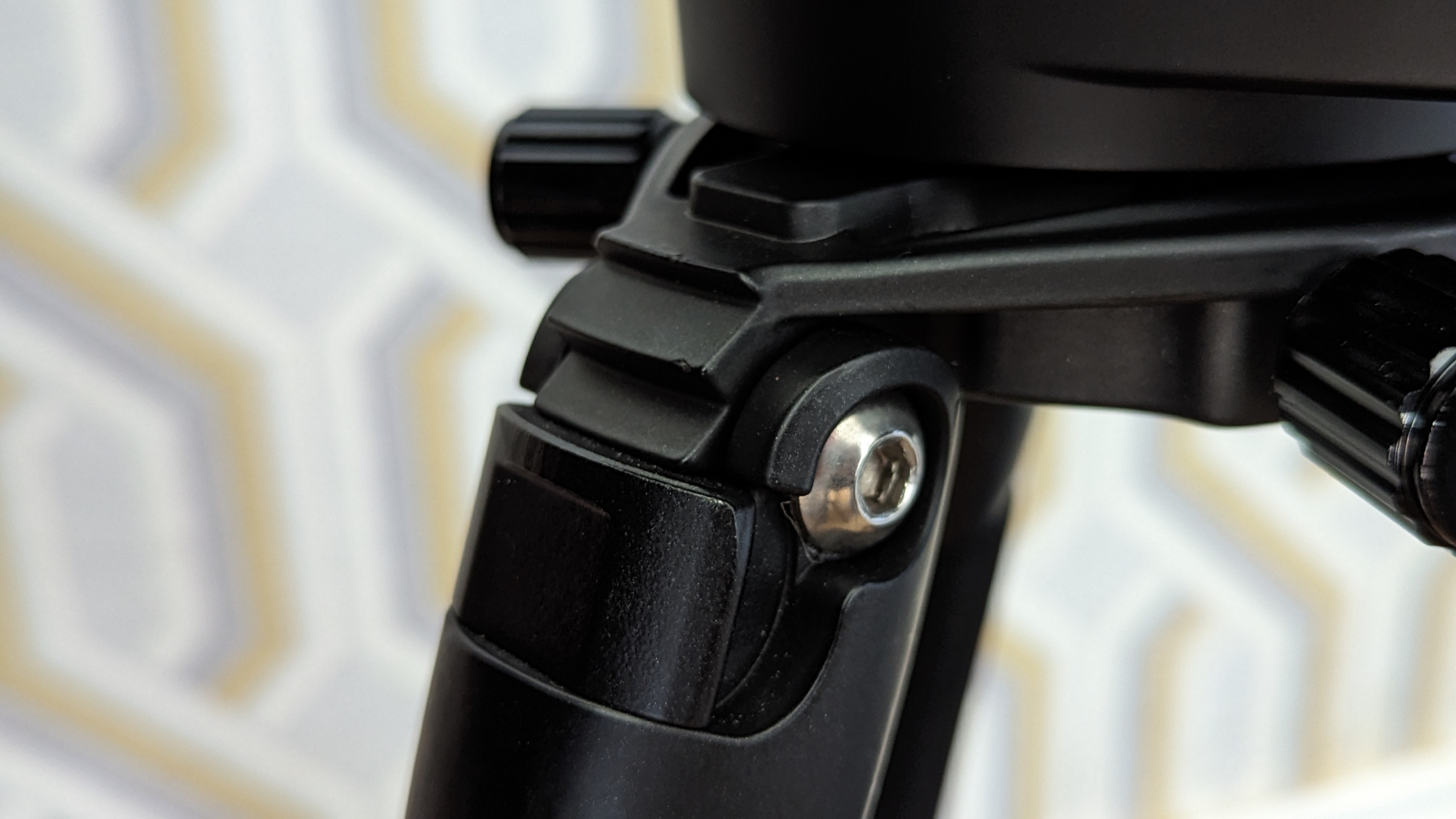
Performance
The performance of the eQuinox 2 is impressive. Building on everything the original eQuinox did well it kicks things up a gear with a higher resolution of 6.2MP to provide more detailed imagery of the night sky. There was a little waiting around for a completely dark sky when we tested it because it automatically aligns itself based on the night sky visible and, when setting up at twilight, it was still a little too bright for the sensor despite our being able to see the moon, Jupiter and some of the brighter stars.
A quick go to on the app sent us whirling across the night sky to view galaxies, nebulae and star clusters. It took about five to ten minutes to get going from synchronising it with our Android smartphone and then we could let it do its thing. So much so that, provided we retained Wi-Fi communication with the telescope (the phone attaches to the broadcasted Wi-Fi signal from the eQuinox 2) we could go back inside and operate it in the garden from the warmth of the kitchen, or car when on location.
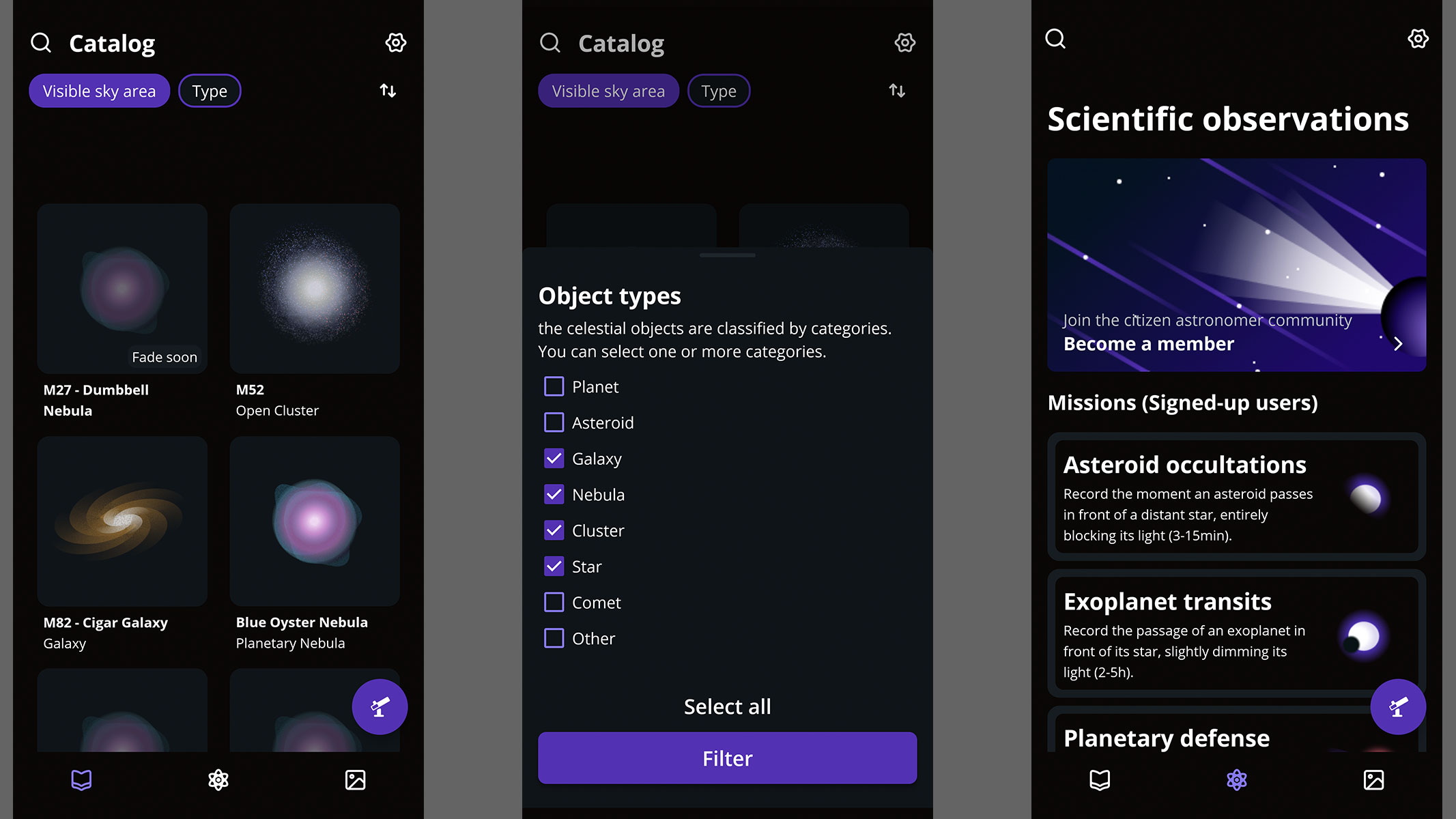
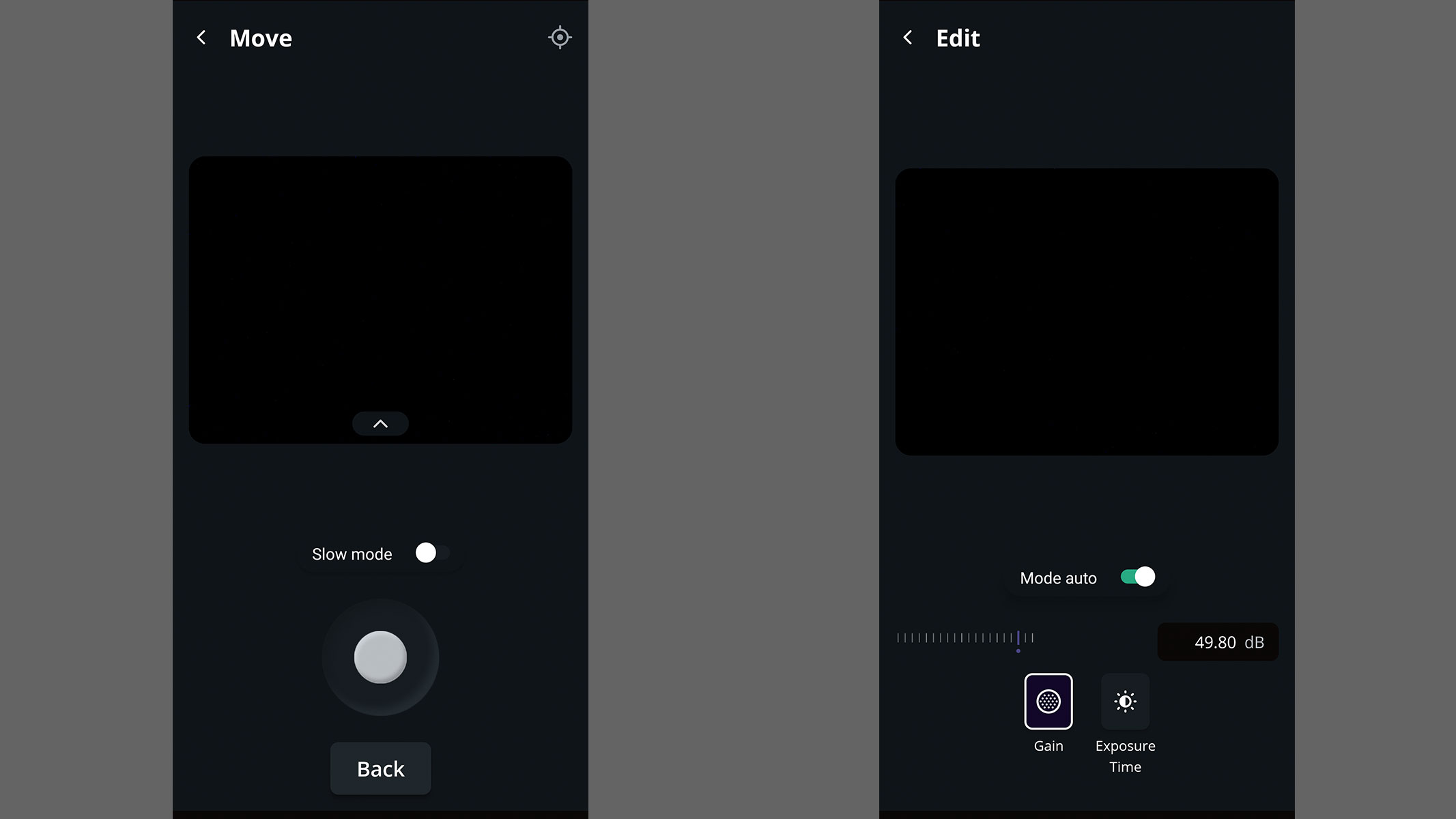
This kind of speedy setup and wireless operation is ideal for anyone who wants to view and photograph the night sky but doesn’t have the time or patience to spend a long time aligning the telescope and setting up a mirrorless camera on the eyepiece with an adapter and continued the convoluted process of imaging the night sky with dark and light frames etc. We managed to photograph the Whirlpool galaxy, Sunflower galaxy, the moon and some star clusters without issue. The enhanced view mode gives even more detailed views as it takes multiple long exposures and stacks them, without any camera settings or editing requirements from the user.
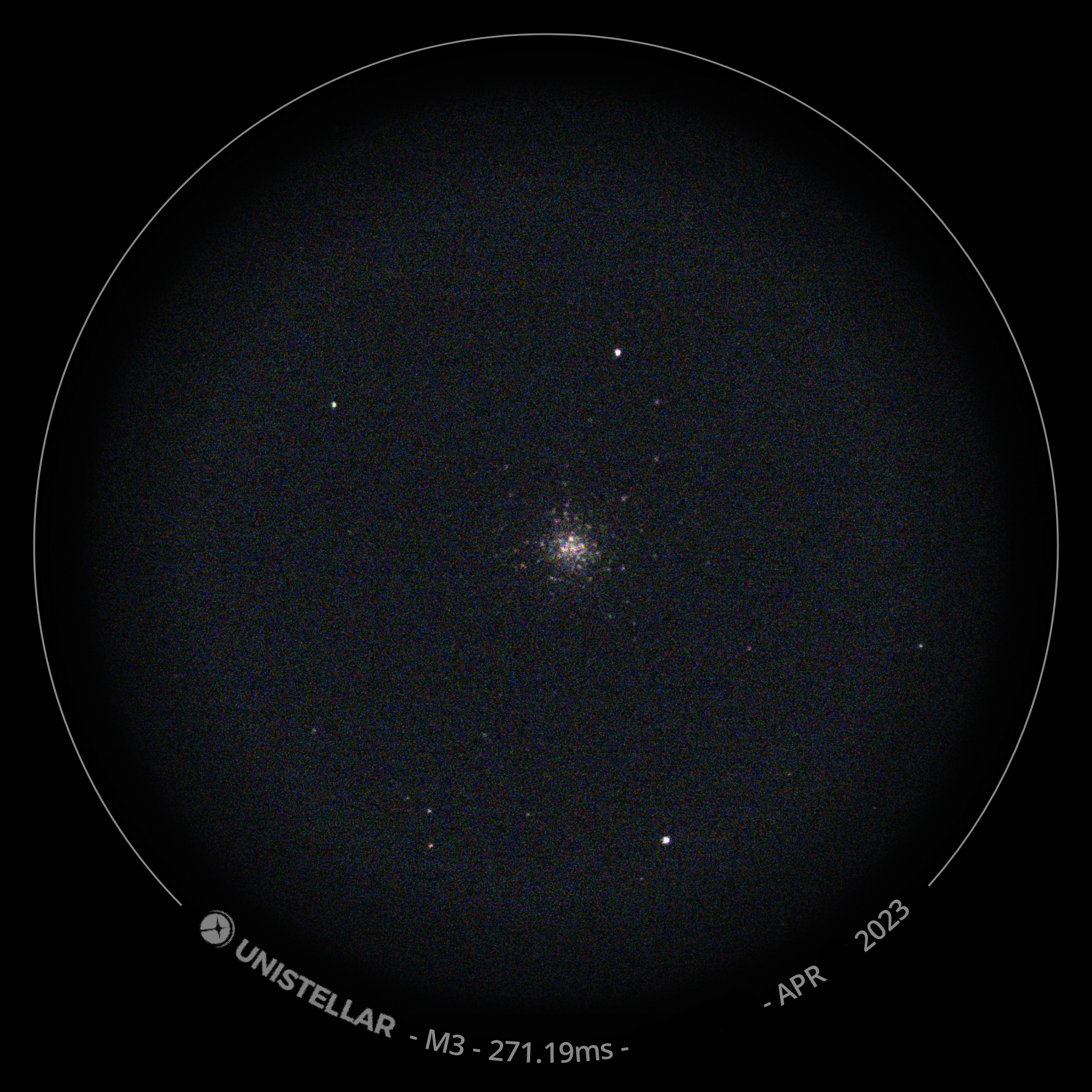
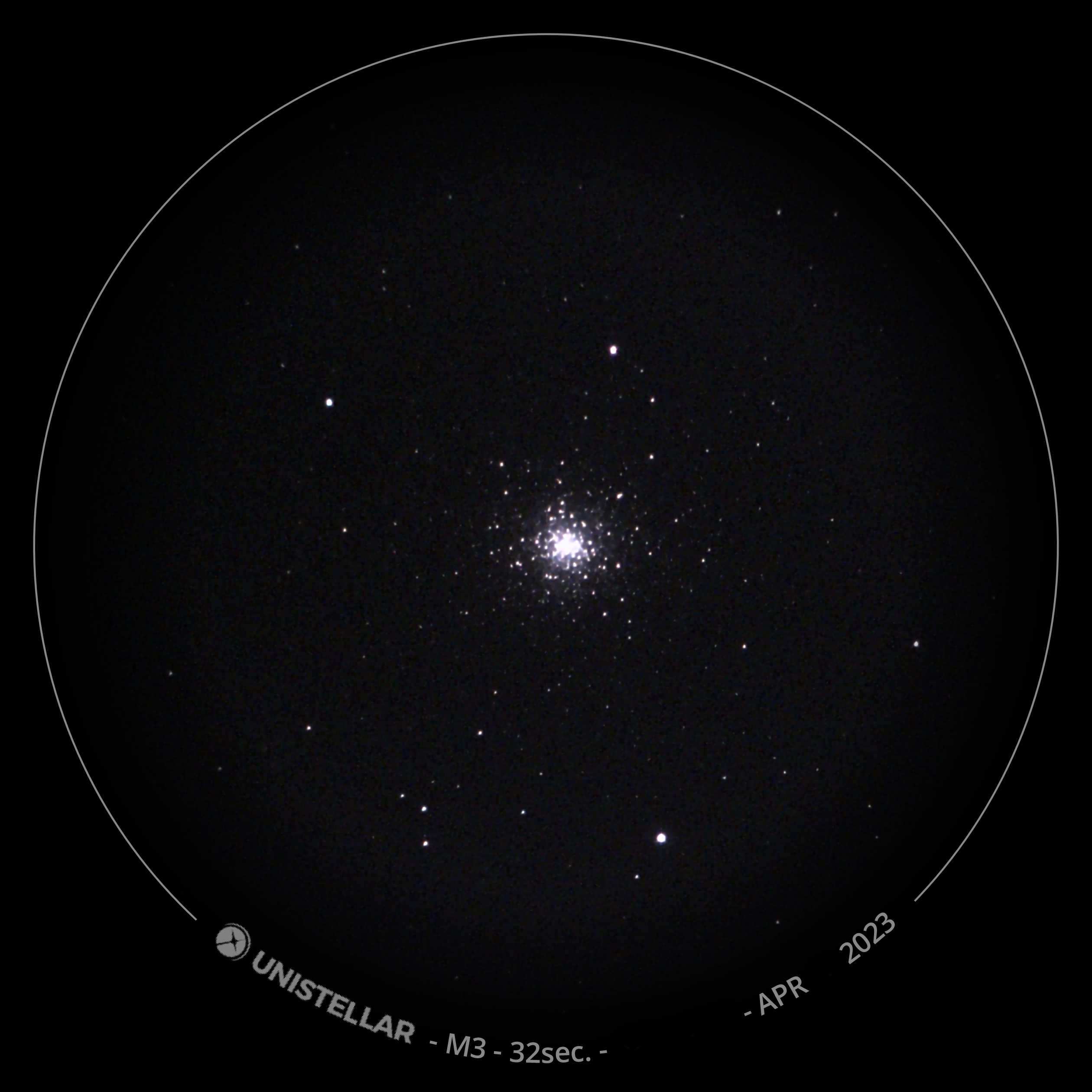

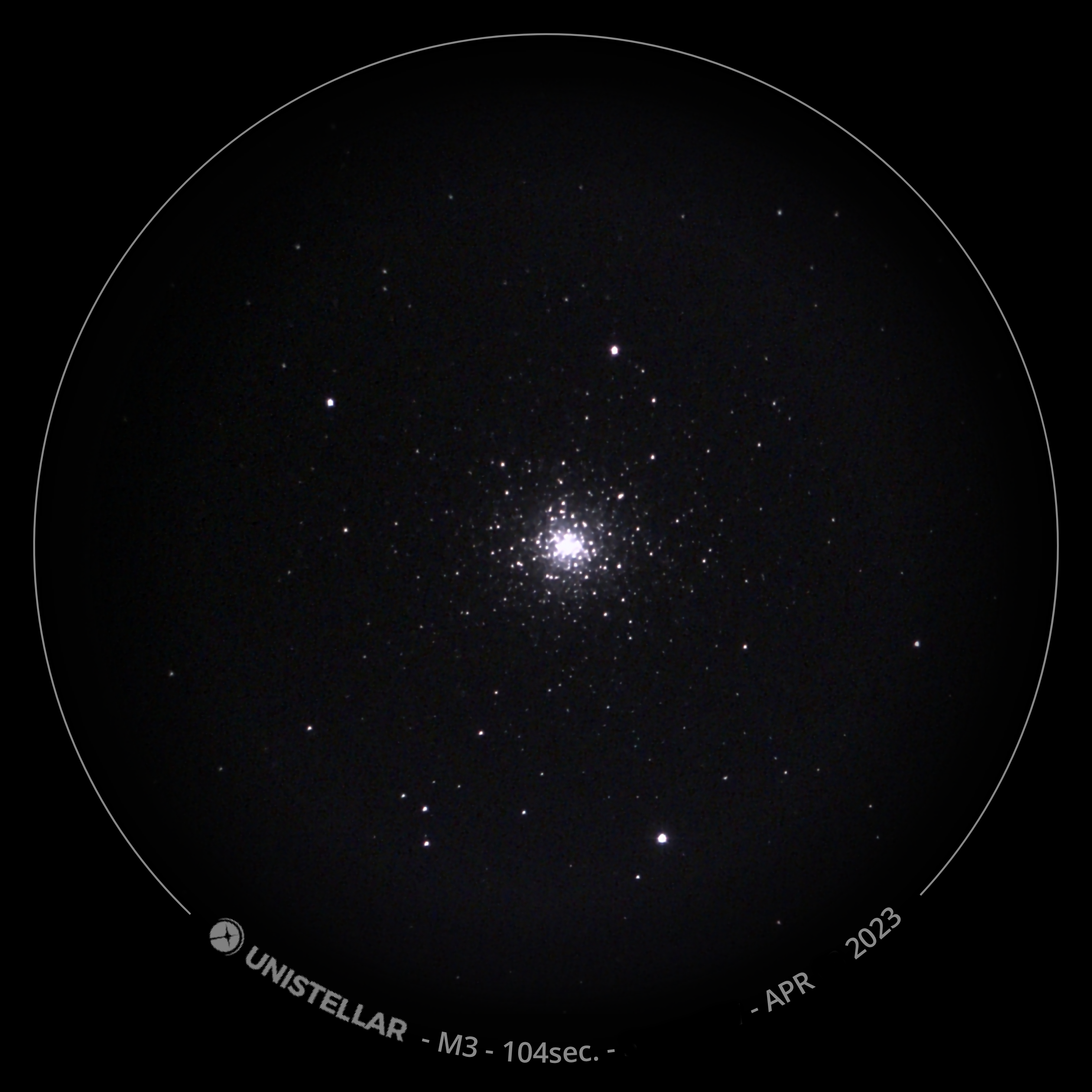
Verdict
Smart telescopes aren’t cheap, but the eQuinox 2 is much more reasonably priced than the eVscope 2 so it’s a good way in if you’re an astronomer that has a little cash to invest in a decent telescope but also wants to photograph the night sky. It’s especially good for rank amateurs who want to learn about and see the night sky but have little to no knowledge of constellations or where to find deep-sky objects. However, it’s also equally helpful for more advanced astronomers who simply don’t have the time to go through a lengthy setup process as with traditional telescopes, adding adapters on for cameras and experimenting with accessories to make the most of the optical instrument.
You might also like...
Unistellar isn’t the only company to manufacture smart telescopes. The other big hitter is Vaonis and their latest effort is the Vespera. Smaller and lighter than the eQuinox, the Vaonis Vespera is seemingly the world's lightest smart telescope at under 11lbs. It’s still an investment so beginner astronomers may need to take this into account at first, but it works in much the same way as the eQuinox 2 by automatically slewing to celestial objects and imaging them using its Sony IMX462 image sensor that can photograph up to 8MP stills.
Those that want a more traditional way to stargaze will likely want something like the Celestron NexStar 5SE which is a neat little catadioptric telescope that combines the benefits of both reflector and refractor into a tiny telescope that’s still eminently useful. You can upgrade the eyepieces, finderscope, tripod and other parts unlike the smart telescopes which come bundled as-is and it too has a motorized, computerized single fork arm mount that can ‘go to’ celestial objects, once aligned.
For beginners though, you may want to take a look at a cheaper refractor like the Celestron Inspire 100AZ. Long and slim, it’s lightweight and ultra-portable so you can take it further than the back garden for skywatching. It’s inexpensive too, which makes it ideal for beginners and those on a tight budget.
Read More: Find out more about astronomy and astrophotography with our guides to the best smart telescopes, the best computerized telescopes, and the best budget telescopes.







